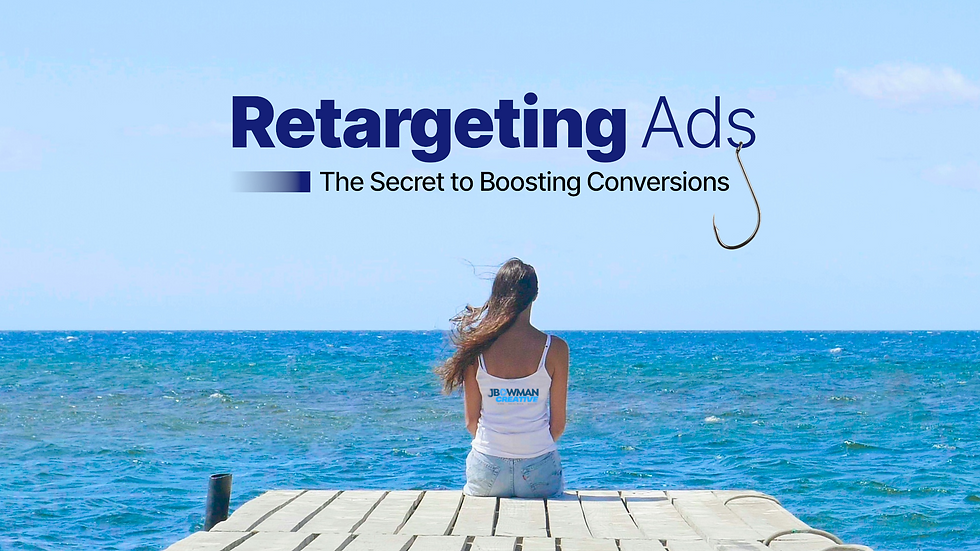The Cost of Running Ads: What Budget Do You Need?
- Jonathan Eyres
- Aug 12
- 3 min read
Updated: Aug 19

You’ve got great creative, a killer offer, and the will to win. But before you fire up your campaigns, there’s one big question: How much should you spend on ads?
Spoiler: “As little as possible” isn’t the answer.
This guide will walk you through how to set a realistic ad budget so you can get results without emptying your wallet—or your sanity.
Step 1: Start With Your Goals
Your budget should match what you’re trying to achieve.
Brand awareness? Budget for reach and impressions.
Lead generation? Focus on cost per lead (CPL) and volume goals.
Sales? Look at your target return on ad spend (ROAS) and work backward.
If your goal is vague, your budget will be too.
Step 2: Know Your Numbers
This is where you take your actual business data and reverse-engineer your budget.
Start with:
Customer Acquisition Cost (CAC): How much you’re willing (and able) to spend to get one new customer.
Lifetime Value (LTV): How much revenue you earn from a customer over their entire relationship with your business.
Conversion Rate: The percentage of people who take the desired action (buy, book, sign up) after clicking your ad.
Example:
Your product sells for $200 and your profit margin is 50%, so you make $100 per sale.
You’re comfortable spending $40 to get a sale (CAC).
Your current landing page converts at 2%.
This means you need 50 clicks to get 1 sale (100 ÷ 2%).
If your average CPC is $1, that’s $50 in ad spend to get one $100 profit sale—so your numbers work.
Now you can multiply up:
Want 100 sales? $50 x 100 = $5,000 ad budget.
This isn’t guessing—it’s math based on your real numbers, which makes it far easier to set budgets that actually make sense.

Step 3: Understand Platform Costs
Different platforms have different average costs:
Google Search: $2–$15 per click (higher for competitive industries)
Facebook/Instagram: $0.50–$4 per click
LinkedIn: $5–$9 per click
TikTok: $0.10–$1 per click
(Your mileage may vary, depending on targeting, industry, and competition.)
Step 4: Work Backward From Your Goal
Example: You want 100 leads at $20 each → you’ll need $2,000.
Or, if you’re aiming for $10,000 in sales at a 4:1 ROAS → your ad budget is $2,500.
This isn’t guesswork—it’s math.
Step 5: Don’t Forget Testing
Always reserve 10–20% of your budget for testing new audiences, creatives, and offers. Testing keeps your ads from going stale and your results from flatlining.

Step 6: Scale Smartly
If something’s working, increase spend gradually—by about 20% at a time. Scaling too fast can wreck your campaign performance. If it's not working, stop burning money and pause the ad.
Pro Tips to Stretch Your Budget
Retarget first: Warmer audiences convert cheaper.
Use lookalike audiences: Reach people similar to your best customers.
Focus on quality creative: Good creative can lower costs across the board.
Monitor daily: Don’t set it and forget it.
Final Thoughts
Ad budgets aren’t one-size-fits-all—they’re built on your goals, data, and willingness to test. Spend enough to get meaningful results, but not so much that you’re gambling with your rent money.
The right budget is one that buys you data, delivers ROI, and leaves you with a campaign you can actually scale.
Next Up: The Best Email Marketing Tools for Businesses — because once you have those leads, you’ll need to keep them warm.
Check back next week to keep up with all of our tips at The Ultimate Guide to Digital Marketing: Strategies, Trends, and Best Practices.


